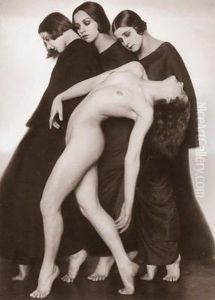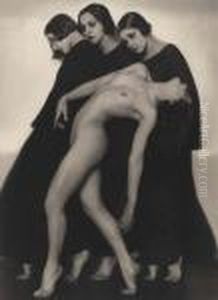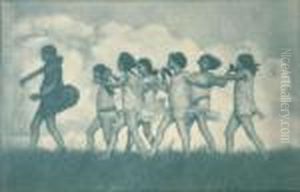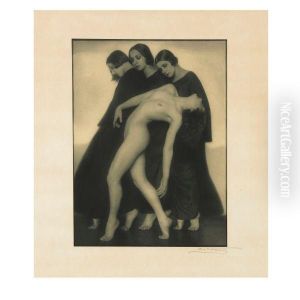Rudolf Koppitz Paintings
Rudolf Koppitz was an Austrian photographer renowned for his contribution to the art of photography during the early 20th century. Born on January 3, 1884, in Schreiberseifen (now part of the Czech Republic), Koppitz began his photographic career in the Austro-Hungarian Army where he was assigned to a balloon battalion and took aerial photographs.
After his military service, he pursued a formal education in photography at the Graphische Lehr- und Versuchsanstalt (Graphic Training Institute) in Vienna, where he later became an instructor. Koppitz's work is characterized by a meticulous attention to compositional elements, light, and form, which allowed him to create strikingly expressive and often symbolic images. He was particularly known for his mastery of the photogravure process, a photo-mechanical process that produces high-quality photographic prints.
Koppitz's most productive period was during the 1920s and early 1930s, a time when he produced his most famous work, 'Bewegungsstudie' (Study of Movement), created in 1925. This photograph, which captures the harmony of multiple figures in motion, is often considered a masterpiece of Pictorialism, an approach to photography that emphasizes beauty of subject matter, tonality, and composition rather than the documentation of reality.
Throughout his career, Koppitz's photography was exhibited internationally, and he was a member of several important photographic societies, including the Linked Ring in England and the Photo-Secession in the United States, led by Alfred Stieglitz. His work was part of the movement that sought to establish photography as a recognized form of fine art.
Rudolf Koppitz's life and career were cut short when he died on July 8, 1936, from complications related to cancer. Despite his relatively short career, Koppitz left behind a body of work that continues to be celebrated for its artistic excellence and for its significant role in the international art photography movement of the early 20th century.



